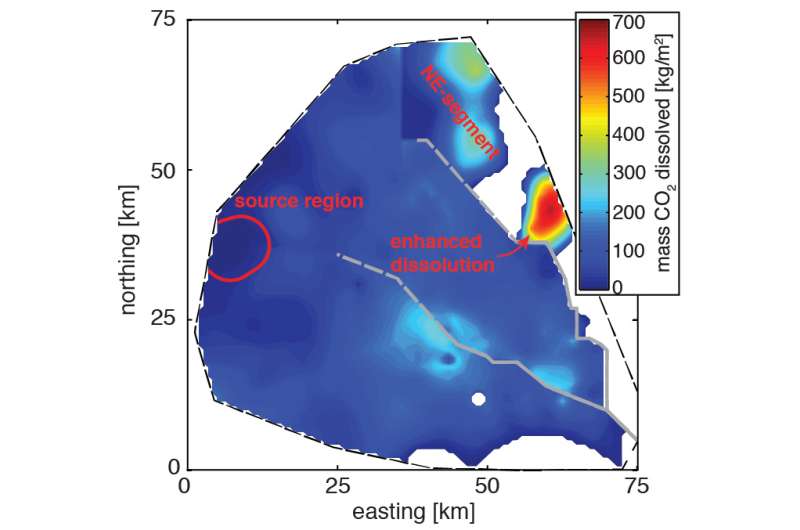New clues for the long-term viability of geological carbon dioxide storage

The carbon dioxide (CO2) at the Bravo Dome gas field in New Mexico is volcanic in origin, and its emplacement began more than a million years ago, not 10 thousand years ago, as previously estimated. Averaged across the reservoir, only 20% of the CO2 has dissolved into the field's saline brine over 1.2 million years, while the rest remains as a free gas trapped by the cap-rock, suggesting that safe long-term storage in geological sites is viable.
This study documents the first field evidence for the safe long-term storage of very large amounts of CO2 in saline aquifers. This illustrates the feasibility of geological CO2 storage and informs policy makers on the requirements for carbon capture and storage technologies.
Carbon capture and geological storage is of critical importance to control the ever-increasing atmospheric CO2 levels from fossil fuel-based energy production. The strategy is to capture the CO2 at large point sources and sequester it into deep geological formations where it could dissolve into the saline brine and convert into minerals. Optimally, dissolution rates are studied in the field, because the spatial variability of geological reservoirs has a strong effect on the dissolution rates. It is, however, extremely hard to determine the CO2 dissolution rate from short-term injection pilot projects.
Scientists from the Center for Frontiers of Subsurface Energy Security, an Energy Frontier Research Center led by the University of Texas, Austin, exploited the Bravo Dome field as a natural laboratory to estimate the CO2 dissolution rates on millennial timescales. This gas field is unique because decades of complementary industry and academic data are available. By combining these two existing data bases and adding their own analyses that determine the heating of the reservoir by volcanic CO2, the researchers determined that the CO2 emplacement at Bravo Dome began about 1.2 to 1.5 million years ago. To their surprise, the researchers found that only 20% of the 1.6 gigatons (a typical coal-fired power plant could emit ~10 to 15 megatons of CO2 per year) of emplaced CO2 have dissolved into the brine over the last million years. Observations indicate that half of the dissolution occurred during emplacement, a result that suggests that careful design of CO2 injection can lead to significant dissolution early in the life of a storage project.
The study also provides evidence that dissolution continued after emplacement. Numerical studies suggest continued dissolution is due to a process known as convective dissolution, which has not been observed in the field before. These results therefore provide important conceptual support for simulation studies used to predict the long-term evolution of geological CO2 storage. Simulations generally predict fast convective dissolution of CO2 within 10,000 years. The slow average dissolution rates inferred at Bravo Dome are likely due to geological heterogeneity and highlight the importance of capturing heterogeneity in the prediction of CO2 dissolution rates.
More information: "Constraints on the magnitude and rate of CO2 dissolution at Bravo Dome natural gas field." Proceedings of the National Academy of Sciences 111, 15332-15337 (2014). DOI: 10.1073/pnas.1406076111
Journal information: Proceedings of the National Academy of Sciences
Provided by US Department of Energy

















